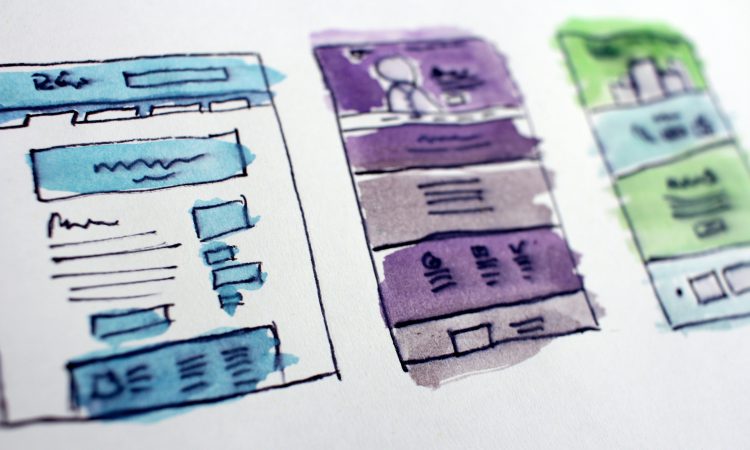
We’re going to tell you something you already know: selling is not easy.
It’s not enough to have a great product or service; you have to know your customer perfectly, their desires and needs, and also demonstrate that what you’re offering is precisely what they’re looking for.
This is even more complex for a B2B business, which has to convince not just one, but several people before reaching the one who will finally make the purchase decision.
Quite a challenge. That’s why it’s important for your company to have a perfectly designed B2B sales funnel to convert your prospects into customers. In this guide, we’re going to explain what a B2B funnel is, how it’s structured, and what stages you should follow to design yours successfully. Shall we look into it?
Sales Funnels: What Are They?
Let’s start from the beginning: what is a sales funnel and where does its name come from?
It’s actually very simple: the sales funnel is the graphic representation of the customer’s buying process. It’s shaped like an inverted triangle, and it’s called a funnel because the number of people who stay in the process keeps getting smaller.
That is, many prospects enter, but most of them end up falling by the wayside, so that only the buyers come out of the narrowest part of the funnel. We have a lot more to tell you about sales funnels. However, before we do, we want to make clear what a sales funnel is not, as this is a topic that often causes confusion.
What Sales Funnels Are Not: The Marketing Funnel
Yes, there’s also a funnel for marketing. Its function is to attract potential customers and lead them to your sales funnel, which is right at the end of the marketing funnel.
That is, the purpose of the marketing funnel is to bring your prospects to your sales department.
To give you a clearer idea of what we’re talking about at any given time, we’re going to exemplify this guide on B2B sales funnels with what’s going to be your product—for a while, at least—a knowledge management SaaS for businesses.
We’ll outline the stages of the marketing funnel for you to situate and understand the place of the sales funnel within the overall process.
Phase 1: TOFU (top of the funnel)
This is where your potential customer first encounters your company. Not a commercial contact, mind you; their first piece of news about it.
Your marketing department is responsible for identifying potential customers—companies that need to improve their internal knowledge management—and attracting their attention to introduce them into the marketing funnel that will eventually lead them to the sales funnel. This attraction is usually achieved through paid campaigns, informative content generation on blogs, videos, or social media, for example, and marks the beginning of your customers’ journey.
Phase 2: MOFU (middle of the funnel)
At this stage, your potential customer has already consumed interesting content that explains what knowledge management is, how it works, and why it’s beneficial to improve it in their company.
They start to consider buying your product or service, and it’s time to capture their data to convert them into a lead and officially start your one-on-one relationship with them.
One way to do this would be to offer a free demo of your product so they can try it at no cost.
Phase 3: BOFU (bottom of the funnel)
Now it’s time to sell. In this final phase of the marketing funnel is where the sales funnel is located.
But we’re not going to linger on this point because we’re going to tell you all about it in the following sections 😉
Why your business needs a sales funnel
Surely by now you know what a sales funnel is for. Just by the name, you at least have one of its benefits clear, but there are several reasons why you should use a customer funnel:
- Because you get more closings. This is the one you already knew. By having a sales strategy, you can plan each commercial action and adapt it to the stage your prospect is at. And, therefore, increase your sales closure rate.
- Because it improves your customer’s journey. The customer journey includes the entire experience of the customer with your brand. From discovering it to becoming a loyal customer. The purchase is part of that process and is key to increasing their satisfaction.
- Because you improve your knowledge of your customers and your sales process. Observing the behavior of your potential customers at each stage of the funnel will allow you to identify the points of improvement in your sales strategy and optimize it to get more customers in the future.
- Because you detect new business opportunities. The information you obtain about your prospects at the different stages of the sales funnel will help you identify different types of customers and possible needs or desires that you were unaware of and develop new products to satisfy them.
Do you find these reasons enough to start creating a sales funnel? Yes? Let’s then go through its phases, so you can start shaping yours.
Stages or Phases of the Sales Funnel
We’ve talked about moving your prospects from one phase to another in the sales funnel, but what are the phases of a B2B sales funnel?
The B2B sales process is longer than B2C, as there are many more people involved in the purchase and, moreover, it’s possible that the person who entered the funnel is not the one who has to make the final decision. This is why it takes a longer time, as decision-making can take months. These are the stages of the sales funnel for selling to businesses:
Phase #1: Intent
In this first phase, we meet the prospect, just arrived at our sales funnel.
Shall we go back to the example of the knowledge management SaaS? This is the moment when your potential customer has just requested the free demo of your software.
For this, they have entered their data in a form and have become an MQL—Marketing Qualified Lead—a kind of label that qualifies the prospect as interested in the product.
These are the characteristics of an MQL:
- They know their problem and have found your company as a possible solution.
- They consume your content and interact with it through your website, your blog, your social networks…
- They have given you their data in exchange for a free demo and are willing to be contacted by you.
In your case, that company knows that they need to get their internal knowledge in order, they have researched the market, they have found you and have considered you an interesting enough option to try your product in exchange for their contact information.
At this point, what is their next step towards purchase?
Phase #2: Evaluation
It’s time to get to know your prospect in depth and find out if they are ready to move on to the next phase and become an SQL—Sales Qualified Lead—the qualification by the sales department.
In this phase, a member of your sales department will arrange a meeting or call with them to learn more about their company and its needs.
This will allow them to determine the best option they can offer and, also, if their interlocutor is the person who will make the final decision to buy or not.
This is the first conversation with your potential customer—at least, in this example—a decisive moment that you should use to generate trust in them.
How can you tell if this prospect can move on to the next sales phase?
- They have at least one pain point that you can solve with your product.
- They have a real interest in solving that problem.
- They fit with your buyer persona or ideal customer profile.
Imagine that your product allows employees to easily access the knowledge of all their departments through a chatbot that has all that data. This makes it easier for them to know what’s being done in each area and saves time searching for information and people to ask.
And that the company that requested your demo and to whom you are now calling has grown somewhat disorganized; and has reached a point where knowing who does what and accessing the information that employees need has become a chore.
So it seems that your product can indeed solve a significant pain point: bringing order to that chaos.
How can you know if there is a real interest in solving that problem? One question you can ask during your meeting with the customer is how long they have been having this difficulty.
If the problem is recent, it is more likely that they are interested in solving it than if they have been suffering it for 35 years. Unless some factor has made them take action now, of course.
The last thing you should consider before moving on to the next phase of the funnel is whether that customer fits your buyer persona or ICP, that is, if the customer is a fit for your business or not.
If your product is designed for multinationals with more than 3,000 employees and your prospect only has 50, no matter how disorganized they are, their company does not match your customer profile.
Phase #3: Sale Closure
Has the prospect passed your little test? Then you can consider it a sales opportunity and start planning the operation to close the deal.
This is the time to prepare your offer: the version or plan of the software most suitable for their case, the support service… all those parts of your service that your customer will value before accepting your economic proposal. Before attacking the process, you must carefully choose which of the sales techniques is most suitable for this operation, as it will be a determining factor to culminate the process with success or, on the contrary, ruin all the previous work.
Phase #4: Customer Retention and Loyalty
Congratulations, you have gained a new customer. Should you forget about them until the next time you want to offer them something?
That’s not how the relationship with customers works – and you know it. If you were to abandon them at this point, you would waste a good part of the resources you have devoted to attracting and maturing that lead since before your marketing department managed to capture it.
It’s time for customer retention and loyalty. To do this, you must take care of them to make them feel valued by your brand, something that will surely help to increase their customer satisfaction.
You can make sure you’re on the right track using tools like satisfaction surveys, for example, to detect improvements and optimize your service.
And, if your process has not ended in sale, do not forget to continue cultivating your relationship through actions such as email marketing, for example.
You never know when they might change their mind, and this is a great tool to continue educating them about your product, show what benefits it has for them, and generate more trust in your company.
9 Tips for Creating a Sales Funnel for Your Business
We have already told you what a funnel is, we have given you examples… Only now we go to practice: how to create a sales funnel?
Here are 9 basic points to consider when creating the strategy for your sales funnel:
#1. Research your prospect
Soak up everything that has to do with the company you want to sell your product or service to.
In the case of the SaaS in the example: find out what its online and offline presence is, what it offers to its customers, what its competition is and what sets it apart from your prospect’s…
Everything helps when it comes to understanding your customer and directing communication during the sale.
#2. Identify the decision-makers
Is the person who contacted you the one who has to authorize the purchase?
If not, find out who should do it and what they might value most when making the decision. It will be useful when highlighting the benefits of your product.
#3. Monitor your competition
Differentiate or die. You’re not the only company offering knowledge management software. What are the others doing? At what prices? How does your product differ from theirs?
Use this information to differentiate yourself in your service and in your commercial proposal.
#4. Train your sales team in your product or service
You need an army of experts capable of solving any doubt in a second.
In your case, a software is a complicated product at a technical level that will need implementation, support… Prepare the answers to your customer’s doubts in advance.
#5. Don’t forget about the follow-up
The B2B sales process is usually long and you will need to contact the prospect periodically to maintain their interest, gauge their maturity within their buying process, and detect the moment when they are ready for sale.
Although it will be the characteristics and price of your product or service that will largely determine the duration of your sales cycle. And that implies managing the rhythms well throughout the entire funnel. Which brings us right to the next point.
#6. Define the pace of communication
Plan the moments of contact with your prospect during the follow-up. How many times will you do it? How often? With what purpose?
In the case of your software, a product that can entail a significant economic outlay – depending on the option chosen by the customer – the sales process will be longer than if you sold office supplies and made a follow-up call to a prospect after a promotional offer of ten toner cartridges.
Neither the amount of the sale nor the customer’s commitment to your brand will be the same. There will likely be fewer people involved in the decision to buy toner, the sales process will be much faster, and both the strategy and the pace of actions will need to adapt to it.
#7. Practice active listening
A good attitude in customer service during the sales process is vital for the success of the operation. Make sure to show empathy and do everything possible to solve the prospect’s problems during all phases of the funnel.
#8. Design products for cross-selling and upselling
Take advantage of each sale to offer complementary products or of higher value than what your customer has purchased. Post-implementation technical support for your software, an extension of your service features, training to your customer’s staff…
#9. Present an objective proposal
The presentation of your offer is a decisive moment in the sales process. Support your sales arguments with data, success stories, and graphic elements that make it more attractive.
With these tips in mind, it will be much easier for you to create a funnel to close more sales in your business.
It’s not easy and it’s not little work, we know. That’s why it’s important to give your sales team all the necessary tools to carry out this task in the simplest and most efficient way possible.
Yes, it can be done. And in the next section, we’re going to explain how thanks to artificial intelligence you can get many more closures in your sales funnel.
How to improve sales funnels thanks to AI
Now you know how to make a sales funnel, you have your team trained, motivated, and ready to convert calls into customers…
Great; all of that is necessary to achieve a good sales percentage but no matter how trained your agents are, there is always room for improvement. And technology is what will allow you to fill it.
Upbe is a conversational intelligence software that analyzes the calls from your call center to provide your team with information that would otherwise be lost, and which will be very useful for closing more sales for your company.
It’s not the same to make the follow-up calls of your software sales process with the notes that another agent has taken, as having in front of you a history of your customer in which you can consult all the conversations you have had with him before.
How many times you’ve talked and what has been said in each call. Because Upbe records and transcribes all conversations from your call center.
This way it’s much easier to know where your customer is and when and how to sell your product.
In addition, you will not only be able to listen to, or read, the content of the conversations. Upbe also knows how to interpret, through conversational intelligence, all the alterations in the tone, rhythm, and silences of your customer.
If your speech is making him uncomfortable, it’s going to know – and it’s going to warn you in real time -; if it’s making him angry, also. And it won’t miss the moment when he’s interested in your software, even if he tries to hide it 😉
It’s going to make it very easy for you to change the discourse on the fly and achieve the final sale.
And not just this one, but also the ones that come after, with the same customer or with others. Because, in addition to detecting the mood of each of your prospects, it is capable of creating behavior patterns by crossing the information from all the calls from your call center.
That is: Upbe is an encyclopedia of human behavior and can predict what a customer’s reaction will be based on all your previous prospects.
The more conversations it analyzes, the more it learns and the more you can get out of it to optimize your sales funnel.
And if you want to know, with numbers in hand, what works and what doesn’t in your sales campaigns, you can always check the statistics. 100% reliable, because Upbe records all the data collected during the calls. All, without leaving a single one.
With Upbe, you can always know at what stage of the sales process your customer is and how prepared they are for the purchase. In addition to knowing in real time if the sales techniques are working and being able to change the direction of the conversation if necessary.
👉Do you want to see how Upbe can help you? Request your free demo and start optimizing your sales funnels.




